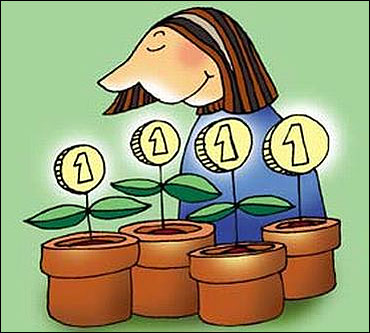Masoom Gupte in Mumbai
It is a six-year savings scheme offered by designated post offices. It offers guaranteed monthly returns on deposits.
The account can be opened singly or jointly, with a minimum investment of Rs 1,500.
The maximum is capped at Rs 450,000 if the account is held singly, and, at Rs 900,000, if jointly. One can open multiple accounts, but overall limits stay.
Click on NEXT for more...
What is a Post Office Monthly Income Scheme?
Photographs: Illustration, Uttam Ghosh
Is premature closure possible?
Yes, but only after a year.
Two per cent of the deposit is charged as penalty for premature closure between the first and third year of opening the account.
Beyond the third year, a penalty of one per cent is levied. In such cases, you will have to forfeit the bonus.
Click on NEXT for more...
What is a Post Office Monthly Income Scheme?
What can you earn?
Annual returns of eight per cent are paid out monthly. Also, on maturity, you will get a five per cent bonus on the deposit.
After maturity, you can leave the amount in the account for up to two years. It will earn interest in line with that offered by a savings bank account.
There is no tax deducted at source and the interest earned as well as the bonus is added to your income and taxed according to your slab.
Click on NEXT for more...
What is a Post Office Monthly Income Scheme?
Who should invest?
Senior citizens and retirees who do not have a regular income stream should invest, given the assured returns and sovereign backing of the government.
Those with a regular income inflow should, instead, invest in growth-oriented instruments like mutual funds.
Even if investing on the debt side, one can look at instruments that work on the compounding principle.






article